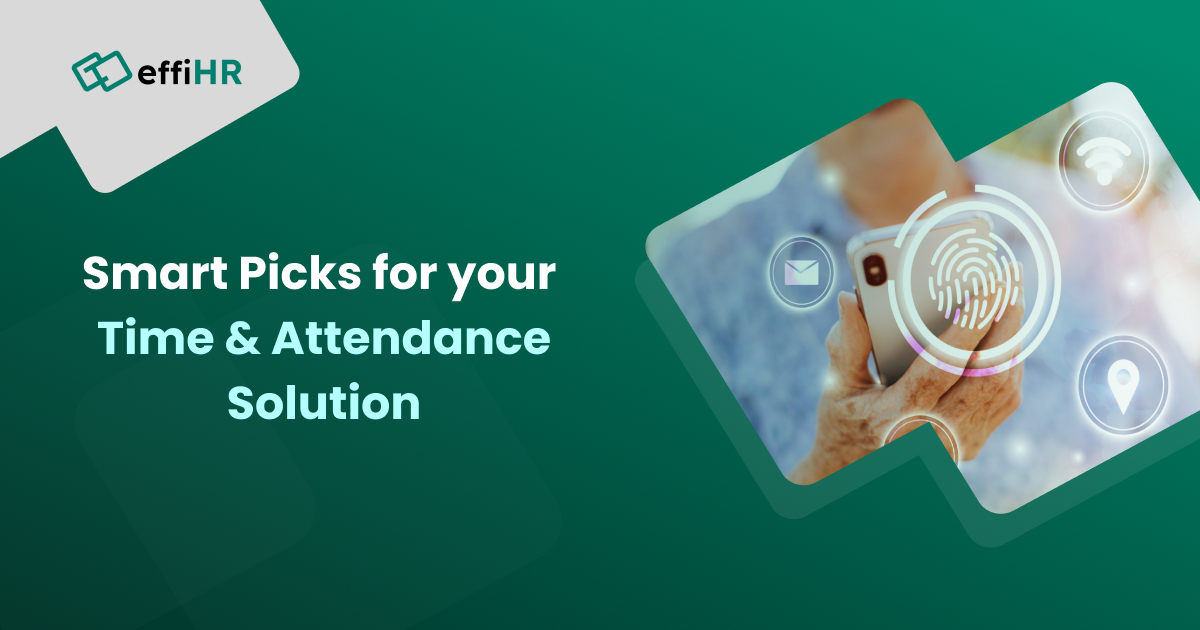Share Article
Get in touch
The right Time and Attendance Management System can streamline operations, reduce errors, and provide valuable insights into workforce management. However, with various options available, selecting the best system for your organization can be challenging.
In this blog, we’ll outline the essential factors to consider before choosing a time and attendance system that aligns with your business needs.
User-Friendly Interface
A complex or unintuitive system can hinder adoption and productivity. Ensure the software you choose has:
- A clean and easy-to-navigate interface for employees and managers.
- Mobile-friendly features for on-the-go access.
- Simple integration with existing workflows.
Customization and Scalability
Every business has unique requirements. Choose a system that:
- Allows customization of features like overtime policies, leave tracking, and shift management.
- Can scale with your business as it grows, accommodating additional users or locations.
Attendance Tracking Methods
Modern systems offer various tracking options. Evaluate the following based on your workforce:
- Biometric Scanners: For enhanced security and accuracy.
- Geolocation/GPS: Ideal for remote or field employees.
- QR Codes or Mobile Apps: Convenient for flexible work environments.
Integration with HR and Payroll Systems
A standalone system can lead to inefficiencies. Opt for a solution that integrates seamlessly with:
- Payroll systems for accurate and automated salary processing.
- HRMS tools for unified workforce management.
- Compliance systems for easy adherence to labor laws.
Reporting and Analytics
Data is key to informed decision-making. Ensure the system provides:
- Real-time reports on attendance trends, overtime, and absenteeism.
- Customizable dashboards for quick insights.
- Predictive analytics to identify potential workforce challenges.
Compliance with Labor Laws
Non-compliance can result in hefty fines and legal issues. Select a system that:
- Automatically tracks hours worked against legal requirements.
- Offers compliance features for local, regional, and global labor laws.
- Provides audit trails for transparent record-keeping.
Automation and Alerts
Automation reduces manual effort and errors. Look for features like:
- Automated scheduling to optimize shift planning.
- Alerts for missed punches, overtime, or attendance discrepancies.
- Workflow approvals for leave or shift swaps.
Security and Data Privacy
Attendance systems handle sensitive employee data. Ensure the software:
- Complies with data protection regulations like GDPR or CCPA.
- Offers encryption and role-based access control.
- Has robust backup and disaster recovery protocols.
Cost-Effectiveness
While the system’s price is important, consider the long-term value. Evaluate:
- Whether the features justify the cost.
- Hidden charges for upgrades, integrations, or additional users.
- ROI in terms of time saved and productivity gained.
Vendor Support and Training
Even the best systems require initial setup and ongoing support. Check if the vendor offers:
- Comprehensive training for employees and administrators.
- 24/7 customer support through various channels.
- Regular updates to improve functionality and security.
Bonus: Mobile Functionality
With remote work on the rise, mobile access is essential. A good system should:
- Allow employees to clock in/out via mobile apps.
- Provide geofencing options for location-based attendance.
- Enable managers to approve requests and track attendance from anywhere.
Conclusion
Choosing the right Time and Attendance Management System is a critical decision that impacts employee satisfaction, compliance, and operational efficiency. By considering these key factors, you can select a system that meets your organization’s needs while laying the foundation for better workforce management.
Ready to make the shift? Research, compare, and choose a solution that works best for your team today!





